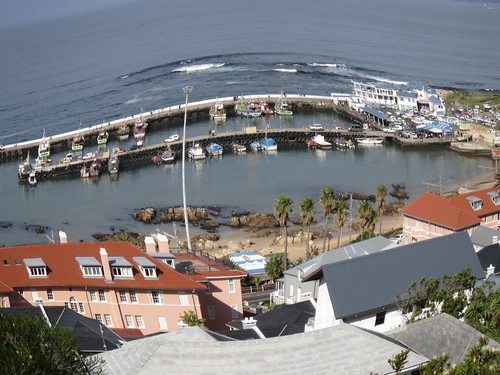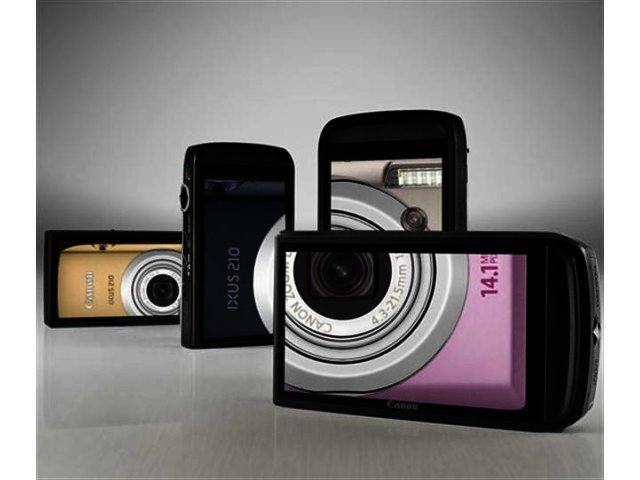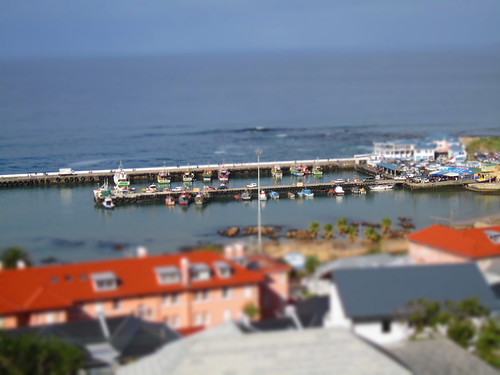Canon’s Ixus 210 is the follow-up to the Japanese company’s first foray into touch-screens - last year's Ixus 200. The 210 feels like a mature product; it's not only stylish but its touch-screen functionality is fantastic.
We took the Ixus to a couple of the World Cup games in Cape Town and it did a lot to impress us. The 210 does seem to be the perfect camera for the football and travel, since it’s small enough to fit comfortably in your pocket and also weights a very manageable 160 g. The battery also lasted a good 270 shots plus some HD-ready movies before becoming (almost) depleted, giving a very full day's worth of pics.
True to the 210’s Ixus heritage it features an extremely classy design. This 14 megapixel point-and-shoot includes a lovely 24 mm wide-angle lens, while its 5x zoom with optical image stabilisation should be more than sufficient in most cases. It's let down by a disappointing 4.3 speed rating, way off the 2.0 offered by Canon's S90 masterpiece.
3.5” LCD screen
Canon’s trust in their touch-screen is testament in the 3.5” screen that completely covers the back-end. It looks delightful, with no other buttons to talk about and all functions displayed and controlled from the screen.
Although Canon includes an excellent 460 00 pixels in the screen, not all of it is used when composing a picture or for playback, since the 4:3 aspect ration of photos doesn’t fit into the 16:9 screen, resulting in two bars next to the side where various icons are displayed. Video playback does however fit perfectly and viewing video recorded on the device was an absolute pleasure.
This touch-screen solution worked better than we expected and we actually found navigation more intuitive than Canon’s regular button setup. The on-screen icons were sufficiently large and the touch-screen generally very responsive.
This touch-screen solution worked better than we expected and we actually found navigation more intuitive than Canon’s regular button setup. The on-screen icons were sufficiently large and the touch-screen generally very responsive.
On top
On top of the Ixus 210 you’ll find a switch for movie, camera and auto, while the playback button and the power button are located next the capture button. It's an extremely easy setup, but the fact that both the playback and power button are slightly indented makes it not only difficult to press but also to find the power on button if you’re in a hurry.
Using the touch-screen
When capturing pics you can, just as with the iPhone, select where you want to focus. The object on which you’ve touched will be tracked even when you move the lens away from it - especially handy when composing difficult shots. Having said that we hardly used the touch-screen to focus, since we’re just too use to push the capture button to do so. iPhone users should have a ball though.
Playback
The touch-screen playback was surprisingly fast, with it being dead-easy to scroll through your photos via either sliding your finger over the photo, pressing the arrows on the side or, strangely enough, tapping the Canon’s body. You can zoom into your pics by simply clicking on the segment of the photo you want to zoom into. Without a touch-screen this is a cumbersome process, but here it works fast and efficiently.
New shooting-modes
Three new features included amongst the 17 scene modes are the gimmicky Fish-eye Effect, the Miniature effect and the Creative Light Effect.
Fish-eye creates a distorted barrel effect, as seen on really wide-angled lenses, while Creative Light leaves a halo like blur of light round images.
Although we couldn’t quite create anything decent out of these two, the Miniature effect was a lot of fun to play around with. It creates a tilt-shift effect which makes far-off objects appear like miniatures, much like in Durban’s Mini Town. Canon allows you to choose the size of the in-focus area, and our results were rather interesting, although it takes some practice to perfect. (Also check out Flickr’s Tilf-shift group.)
Fish-eye creates a distorted barrel effect, as seen on really wide-angled lenses, while Creative Light leaves a halo like blur of light round images.
Although we couldn’t quite create anything decent out of these two, the Miniature effect was a lot of fun to play around with. It creates a tilt-shift effect which makes far-off objects appear like miniatures, much like in Durban’s Mini Town. Canon allows you to choose the size of the in-focus area, and our results were rather interesting, although it takes some practice to perfect. (Also check out Flickr’s Tilf-shift group.)
Here are some pics of the effects in action:
A shot of Muizenberg harbour with Auto capture.
Muizenberg harbour captured with the Canon's Miniature Effect.

Muizenberg harbour with the wonky Fish-eye Effect.
Video
Canon includes HD ready 720p video plus also an HDMI port to play back your photos and videos on HDTVs. While the quality of video was good, we did have some trouble with focus which seems a bit finicky if you want to quickly start recording. A number of our videos were out of focus since we did not take the time needed to set the focus first and just started recording.
Conclusion
Canon’s move to touch-screen cameras could have been gimmicky but we found the Ixus 210 easy to work on, intuitive and a very good touch-screen solution. It’s especially playback that is handled wonderfully and we hope to see touch-screen, along with the S90’s front ring, implemented on Canon’s G-series. The Miniature effect is also well worth looking into.
The Canon Ixus 210 costs a bit more, retailing for about R3599. Visit www.canon.co.za for more.
PROS
Good playback, touchscreen makes navigation easy, cool miniature effect.
CONS
Not all of the screen is used for regular display, top buttons difficult to distinguish in a hurry, lens speed a bit slow.







